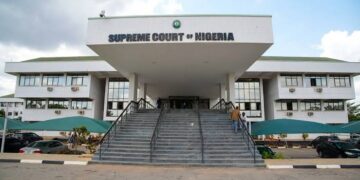As Nigeria grapples with rising inflation and increasing cost of fuel, the price of Liquefied Petroleum Gas (LPG), commonly referred to as cooking gas, has surged dramatically to N1,500 per kilogram. This increase has left many households feeling the financial strain, as LPG is an essential commodity for everyday cooking needs.
Current LPG Prices
According to findings from various retail outlets in Ogun and Lagos states, the price of cooking gas has increased to N1,500 per kilogram as of Sunday. In Abuja, the cost to refill a 12.5kg cylinder of LPG has skyrocketed by 41.6 percent, now reaching N17,000—up from N12,000 in July 2024 and N11,735 in January 2024. This stark increase highlights ongoing market trends and poses significant implications for consumers.

Government Response
Despite efforts by government officials to address the issue, including promises by the Minister of State for Petroleum Resources (Gas), Ekperikpe Ekpo, to lower the price of cooking gas, the situation appears to be worsening. In August, Ekpo assured the public that he would engage regulators and gas producers to find solutions. However, a recent market survey revealed that LPG prices continue to rise.
In the Lokogoma area of the Federal Capital Territory (FCT), for example, the price of a 12.5kg cylinder now stands at N17,000, reflecting a 41.6 percent increase from just three months ago. Consumers in Kubwa are now paying between N16,200 and N16,500, compared to the previous price of N12,000. Some major distributors in the outskirts of Bwari, Kurudu, and Jikwoyi sell cooking gas at N1,300 per kilogram, with prices varying by location.
Ola Oresanya, the Commissioner for Environment in Ogun State, previously warned that many Nigerians might turn to charcoal as an alternative cooking fuel if the price of LPG continues to climb.
Local Production Challenges
Suresh Kumar, Managing Director and Chief Executive Officer of NIPCO Plc, discussed the potential relief that the Dangote Refinery and other domestic refineries could bring to escalating prices. He emphasized that over 60 percent of the cooking gas consumed in Nigeria is imported, significantly contributing to the rising costs.

“Currently, less than 40 percent of the 1.5 million metric tonnes of LPG consumed domestically is produced locally. The government must encourage companies like Chevron to convert more of their propane output into butane, which is more suitable for domestic use,” Kumar explained.
He expressed optimism that prices would eventually decrease as domestic production improves, particularly with local refineries sourcing crude oil in local currency. “Greater local production will make LPG more affordable, reducing exposure to foreign exchange fluctuations and international pricing dynamics,” Kumar stated.
The Path Forward
Kumar urged the government to introduce incentives to stimulate investments in gas processing. He noted that NIPCO has significantly expanded its LPG operations over the years, growing its capacity from 5,000 metric tonnes in 2008 to over 20,000 metric tonnes today.
He also emphasized that while LPG is essential for households, compressed natural gas (CNG) is expected to play a significant role in powering industries and transforming the transportation sector. “Our vision is to harness opportunities and grow Nigeria’s LPG consumption to levels appropriate for our population of over 200 million people,” he said.
Kumar stressed the importance of capturing and processing flared gas to increase domestic LPG supply, urging collaboration with the Nigerian Midstream and Downstream Petroleum Regulatory Authority and other stakeholders.
Despite stagnant demand due to high prices, he anticipates that the market will stabilize soon as more players enter the gas processing sector. “It is crucial for the government to support local refineries to boost domestic gas production and drive down retail prices,” Kumar concluded.
































